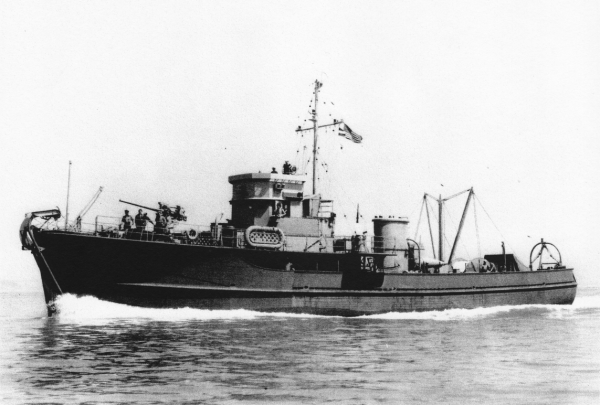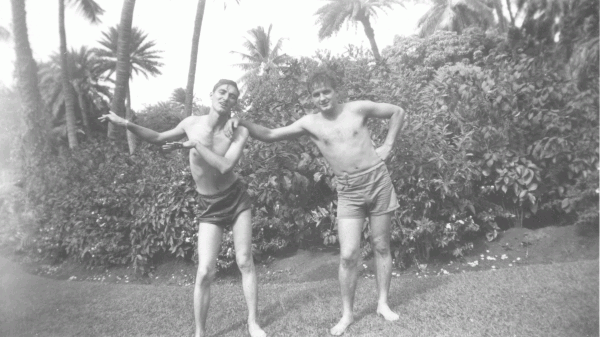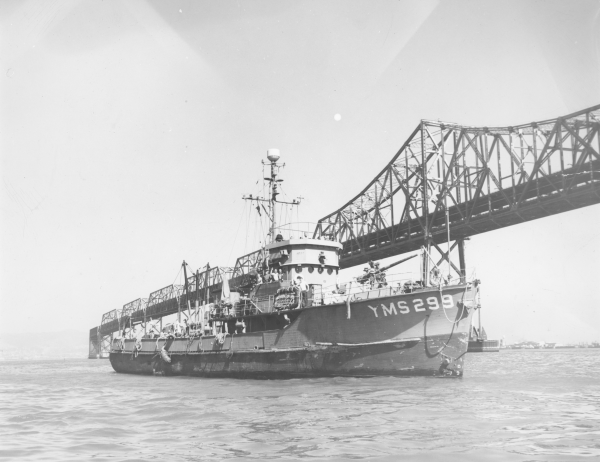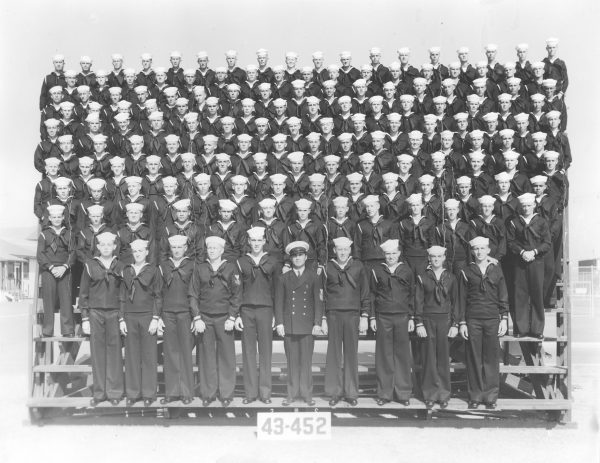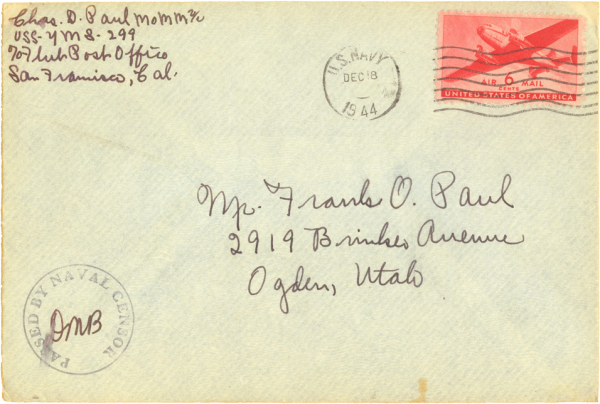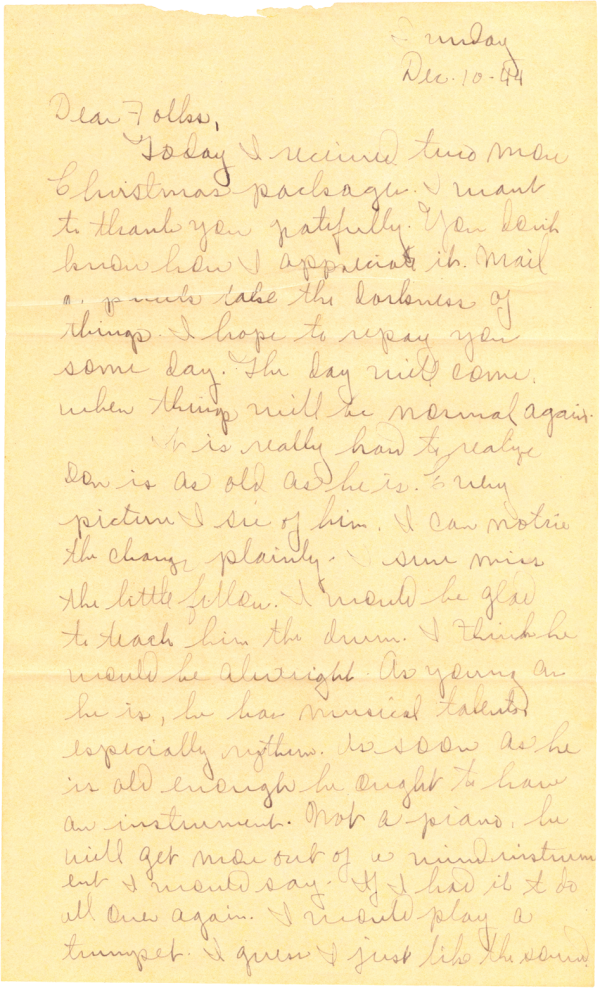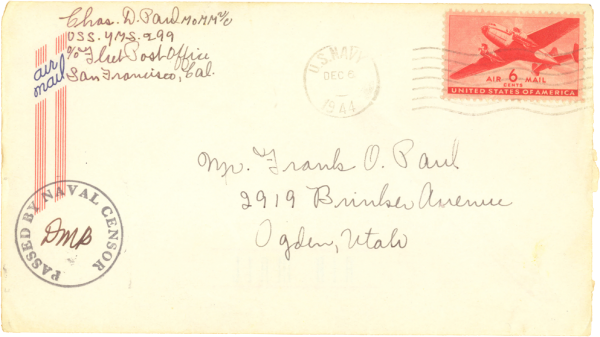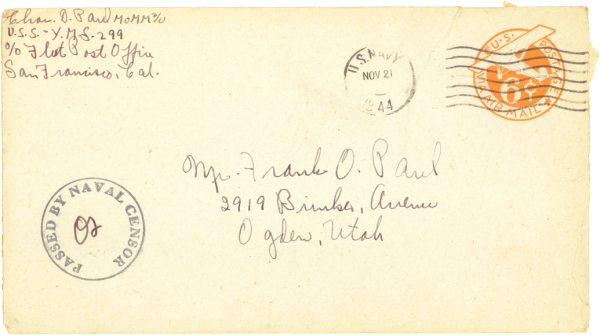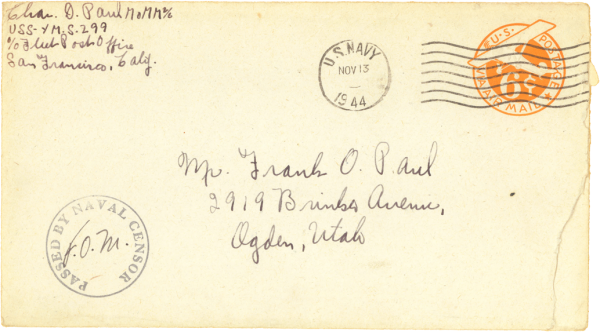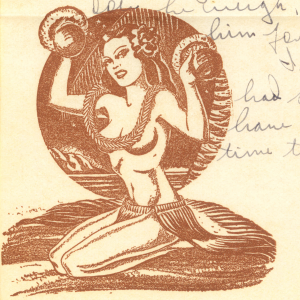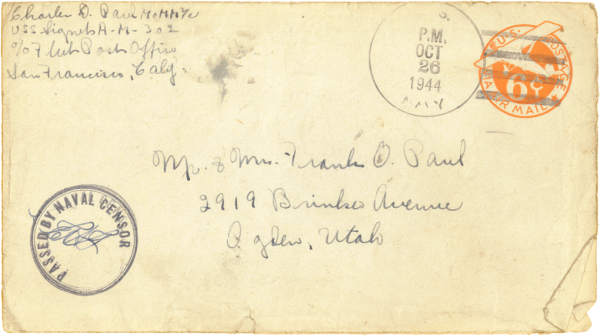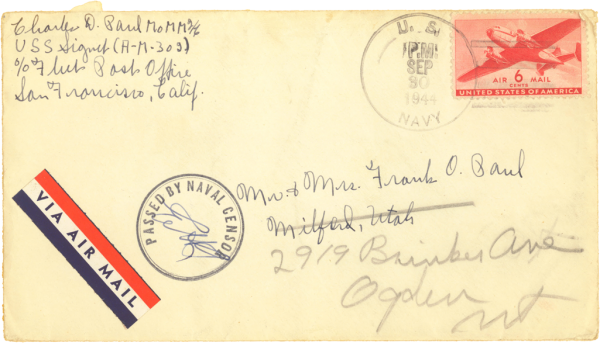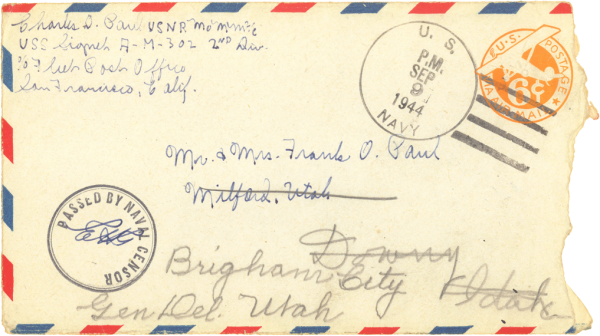As part of this project, I try to identify all of the soldiers in each of my grandfather’s photos, based on incomplete markings on the back. I do so by looking through muster rolls of ships leaving California and Hawaii at the same time as his, browsing last names, then searching online for records of these soldiers to match faces and ages.
Sadly, this usually means the soldier isn’t alive. Joe Aragon is one of these faces. I didn’t find him online until his grave site was posted on Find-a-Grave. The good new is, I reached out to someone managing the page and they ended up being a family member. I shared this photo with them:
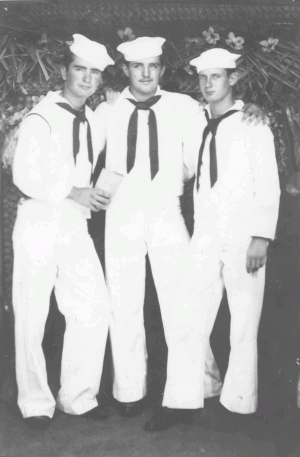
Joe Aragon (S2c), CDP and Welch; September 1944, Hawaii
She confirmed the photo I have is in fact her family member and the same Joe Aragon on Find a Grave! It’s a minor personal victory, but these little victories feel rewarding anyway.
Visit Joe Aragon’s memorial page.
